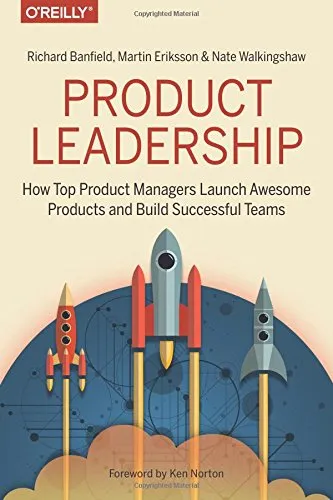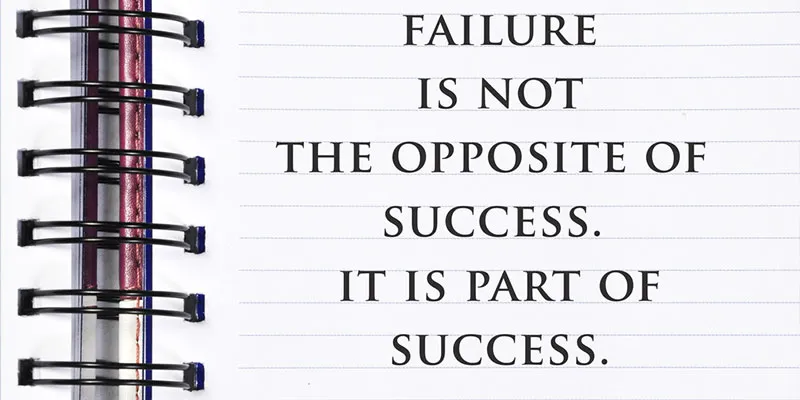From founder vision to customer delight: product leadership tips for startups and large firms
How do product managers connect the dots between a company’s vision and customers’ needs? How does a product manager’s role evolve from the startup stage to large enterprise organisations? How can external vendors help in product development? This new book shares insights and trends in product leadership.

“In today’s lightning-fast technology world, good product management is critical to maintaining a competitive advantage,” according to the authors of Product Leadership: How Top Product Managers Launch Awesome Products and Build Successful Teams.
Richard Banfield is the CEO and Co-founder of Fresh Tilled Soil. His earlier books are Design Leadership and Design Sprint. Martin Eriksson is the Founder of ProductTank and Mind the Product, and earlier led product teams at Monster, the Financial Times, and Huddle. Nate Walkingshaw is the Chief Experience Officer for Pluralsight, and was earlier at Brightface and Tanner Labs.
Their book draws on interviews with dozens of product heads at companies such as Adobe,YouTube, Uber, Google, Airbnb, Basecamp, Zipcar, Intuit, Drift, Transferwise, and Localytics. The nine chapters span 218 pages, and the book has an online companion, where readers can sign up for email updates.
Product management is sometimes confused with the other ‘PMs’ – project management and programme management. In some companies, it is regarded as a technical function, while in others, it is primarily an outbound marketing function.
Product management has now matured as a discipline at the intersection of business, technology, and user experience. Product-first companies such as HP, Microsoft, and Google have helped bring a shared vocabulary to the field.
Product manager, product leader
“The job of a product manager is to discover a product that is valuable, usable, and feasible,” says Mart Cagan, Founding Partner of the Silicon Valley Product Group. Product leadership is a level up from management, and involves more team skills and visioning capability.
Product managers must be experienced in at least one of the three key areas (business, tech, UX), passionate about all three domains, and able to converse with practitioners of all three. Product management also involves familiarity with strategic planning, marketing, and team development.
Product managers should be good at the operational side, as well as in team inspirational roles. They need creativity to blend quantitative and qualitative customer data, and be up to date on market trends and research reports.
A product manager should be able to connect the dots and build the overarching bridge from a company’s vision to the product roadmap. The vision should be translatable into flexible goals, and also be timeless and independent of market or tech trends, eg Walt Disney’s ‘Make people happy.’

Products are built through customer engagement, problem validation, prototyping, and iterative testing and development cycles. They should be focused on the “glaring problem rather than shiny features.” Product managers need to switch between strategy and tactics as needed, depending on changing contexts, budgets and even investor pressure.
“Product management is the glue that holds together all the various functions and roles across a company that speaks different languages,” says Google Ventures’ Ken Norton. In addition to hard skills, the product manager must possess the soft skills of persuasion, negotiation, team building, facilitation, storytelling, coaching, mentoring and articulation. Product management may not be the right career path for those who are averse to change and ambiguity, the authors caution.
Product management draws from frameworks such as lean, agile, scrum, design sprints, directed discovery, design thinking, and kanban. Product managers are internal as well as external evangelists of the founders’ vision, and help find product-market fit in support of customer needs and experiences. Some good ways of maintaining customer focus are getting in front of the customers on a regular basis, and developing an ‘inner circle’ of customers who are included in product conversations.
Regular tasks of product leaders are roadmap prioritisation of ideas, features and projects; connecting roadmaps to release plans; frequent check-ins on OKRs (objectives and key results); and communication across multiple channels. Product leaders have a strong sense of empathy, and are able to ‘coach in the moment.’ They know when to make small bets (optimisation), and large bets (going beyond the local maximum to a global peak).
Successful product teams have a sense of purpose and mastery, and tend to be diverse, cross-functional, autonomous, learning-oriented and self-directed. “There is a wealth of research that underlies the value of diverse teams and shows that being around people who are different from us makes us more creative, more diligent, and harder-working, and has also been proven to make companies more innovative and successful,” according to the authors.
While hiring product leaders, qualities to look out for are big-picture thinking, enjoyment of challenges, ability to unblock obstacles, capacity to wear multiple hats, writing/illustration skills, time management, and humility to create ‘psychological safety’ for team members.
“Hire for the challenge ahead, not for the experience behind,” the authors advise. Hackathons, competitions, and time-boxed challenges are effective hiring activities in addition to interviews.
For the long term, companies should cultivate a pipeline of internal and external product candidates, and even build internal product manager programmes to spot and train promising product managers, eg in companies such as Google, Yahoo, Yelp, Facebook.
Phase 1: Startup
Startups need to clearly understand what the customer problem is, whether it is worth solving, and whether the customer is willing to invest money, time, effort and trust to switch to the proposed solution. The startup phase of a company’s growth is a “race against time and ignorance.”
Sense-making by connecting vision to daily operations can be tough when the vision itself may keep changing; it is also important to unearth assumptions beneath assumptions. “Daily swims in the ocean of ambiguity are a part of the product leader’s life,” the authors joke.
In an environment of uncertainty, product managers must “brutally focus” on a small customer segment in the initial stages. They need to build a regular cadence of testing concepts, as well as products. The most pressing needs of customers need to be addressed, and not nice-to-have features.
Good listening skills are important here, along with the ability to learn from failure, overcome past assumptions (‘be willing to be surprised’), and pivot. (See my framework of the '8 Is' of Design Thinking for Startups and book review of Problem Solving with Design Thinking.)

It is important to also map the purchase cycle, and understand who is choosing the product, who influences the choice, who is paying for the product, and who will ultimately use it (all four may be different, especially in the B2B context). Interview-build-validate cycles are an important methodology here, along with gathering and interpretation of research data for multiple employees.
Team communication and cohesion are key foundations. Broad and diverse inputs should be solicited, and outputs should be presented in such a way that everyone feels their input was heard. In cases where the founder is also the product manager, there may be transition issues when a full-time product manager is on-boarded.
Phase 2: Emerging organisation
In emerging companies that have reached escape velocity, product-market fit has been found and the focus is on managing for scale. The challenge is that more layers inevitably get introduced between the product leader and the customer, the authors caution.
Another challenge in the growth stage, as the team size increases, is to translate the product management philosophy to all who join, according to Intercom’s Paul Adams. Product heads will need to move from technical master to people leader, but this is not always a smooth transition.
Phase 3: Enterprise organisation
Large enterprises are much more complex, and have multiple product managers and senior leaders working on product portfolios. They also have product teams working in multiple locations, time zones and language groups. A key innovation challenge is to stay ahead of smaller, nimbler and disruptive startups.
Complacency of past successes, habits of the past, and even arrogance are mindset blocks for large firms. Product managers need to continually challenge and reinvent themselves, which takes courage. Abundance of resources (“an embarrassment of riches”) also leads to problems in prioritisation, unlike startups which thrive in conditions of constraint. There are competing priorities and political agendas at play.
Many companies have their enterprise product roadmaps dictated to them by the upper third of their revenue-generating customers, according to the authors. Senior managers sometimes receive data that is too “sanitised” and intended only to paint a rosy picture. Many companies, furthermore, don’t even bother to call customers and ask them about the product they just bought.
To overcome these challenges, product leaders in large companies need to build sensory networks inside and outside the organisation to get accurate unfiltered feedback. Corporate culture should be changed to become more entrepreneurial and open to co-creation with external innovators. (See also my reviews of the related books Unrelenting Innovation and The Startup Way.)

Outsourcing
At times, companies at all stages may need to outsource some design and development tasks to agencies, studios, partners, consultants and other external stakeholders. Both teams need to agree on problem scope, solution value, service quality, execution time, success metrics, and risk mitigation.
Outside inputs are a great way to get “an immediate injection of experience” from domain experts. “Bringing in outside facilitation is often the catalyst a team needs to break out of an old habit or see a new perspective,” the authors add.
Care should be taken to ensure both parties are aligned in product vision, speak a common language, use compatible tools, communicate regularly, and agree on billing terms. In the long run, success comes from going beyond transactional contracts to deep relationships with strategic partners. “Great partners always start new project conversations with lots of great questions,” the authors observe.
In sum, product leaders at all stages of a company’s growth need to have a learner’s mindset and a bias to action. If the sales team’s mantra is “Always be closing,” then the product leader’s is “Always be learning,” the authors sign off.
The book has a number of useful and inspiring quotes, and it would be good to end this review with some of them.
A product manager is continuously going back and forth between the 10,000-feet view and the 2-inch view. - Ellen Chisa, Lola
Be stubborn on vision, flexible on details. - Jeff Bezos, Amazon
If a picture is worth a thousand words, a prototype is worth a thousand meetings. - John Maeda, Automattic
If you are not embarrassed by the first version of your product, you’ve launched too late. – Reid Hoffman, LinkedIn
Success is the biggest inhibitor to future success. - Barry O’Reilly, ‘Lean Enterprise’
Dream in years; plan in months; evaluate in weeks; ship daily. - DJ Patil, ex-US Chief Data Scientist






![[App Fridays] Inside Blinkist’s attempt to let you read bestselling nonfiction books in 15 minutes](https://images.yourstory.com/cs/wordpress/2017/04/Blinkist-1.jpg?mode=crop&crop=faces&ar=1%3A1&format=auto&w=1920&q=75)

